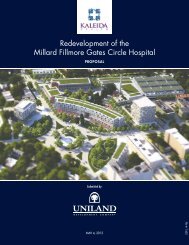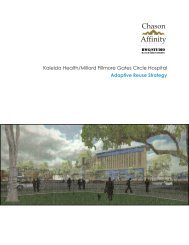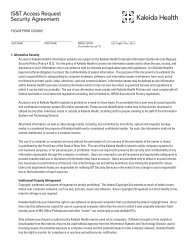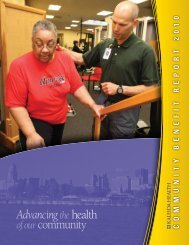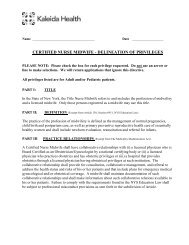Chromosomal Microarray Analysis: Taking a ... - Kaleida Health
Chromosomal Microarray Analysis: Taking a ... - Kaleida Health
Chromosomal Microarray Analysis: Taking a ... - Kaleida Health
Create successful ePaper yourself
Turn your PDF publications into a flip-book with our unique Google optimized e-Paper software.
So What???<br />
Prognosis<br />
Recurrence Risk<br />
Importance of Making a<br />
Specific Diagnosis<br />
Prognosis: poor; majority of patients with<br />
deletion 1p36 have severe to profound mental<br />
retardation<br />
Recurrence Risk: majority are de novo<br />
(unrelated to parents' chromosomes); no<br />
increased risk for future pregnancies<br />
Parental studies indicated in all cases; 6% of<br />
parents will have a balanced rearrangement<br />
with associated increased risks of recurrence<br />
Methods of Detecting<br />
<strong>Chromosomal</strong><br />
Abnormalities<br />
History of the Routine Karyotype<br />
Routine Karyotype<br />
19 th century: chromosomes first seen and<br />
named<br />
1952: Hsu discovered by accident that<br />
treatment of cells with a hypotonic solution<br />
allowed for improved chromosome spreading &<br />
visualization<br />
1956: Tijo and Levan establish human<br />
chromosome number as 46<br />
6



